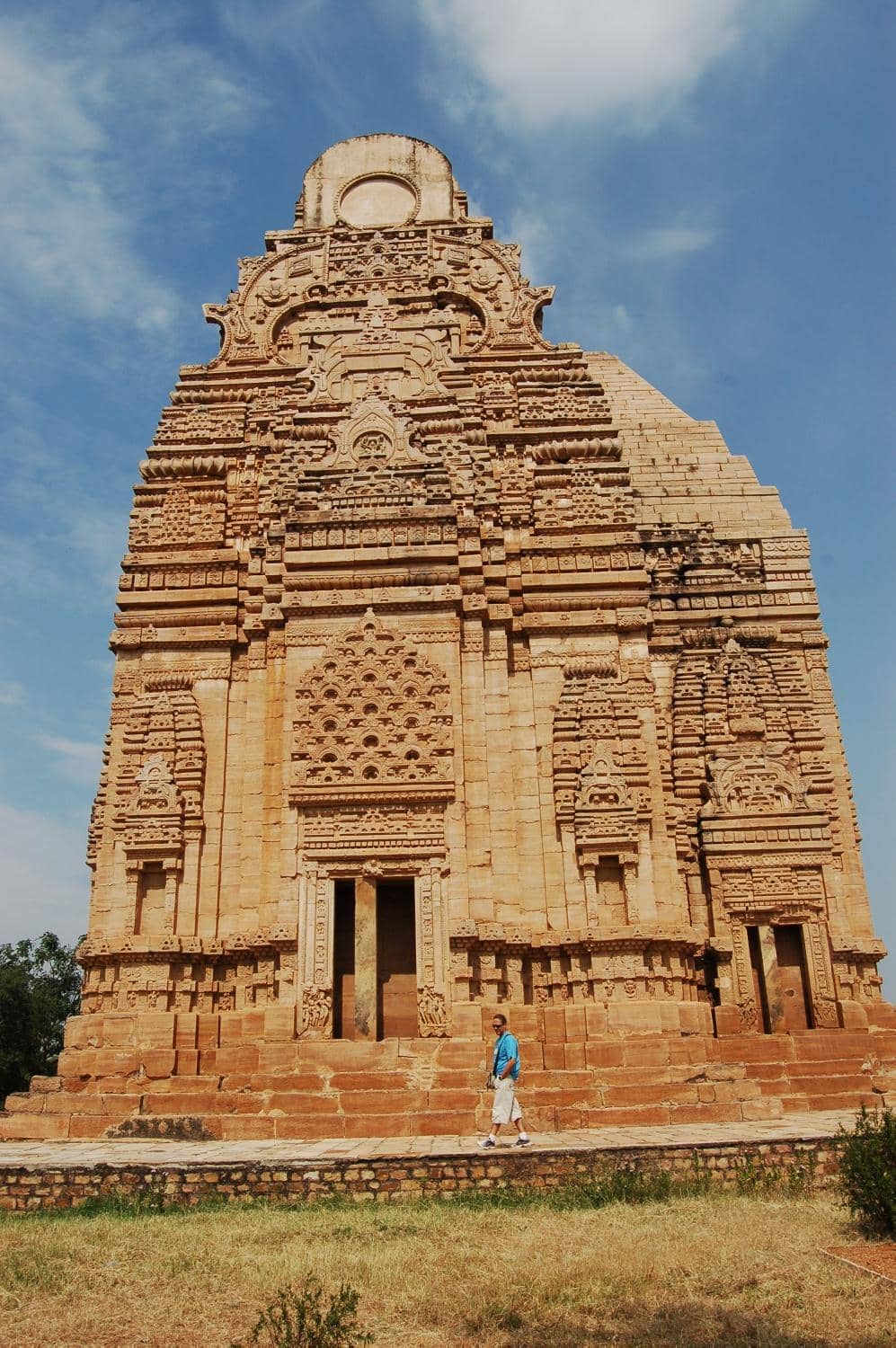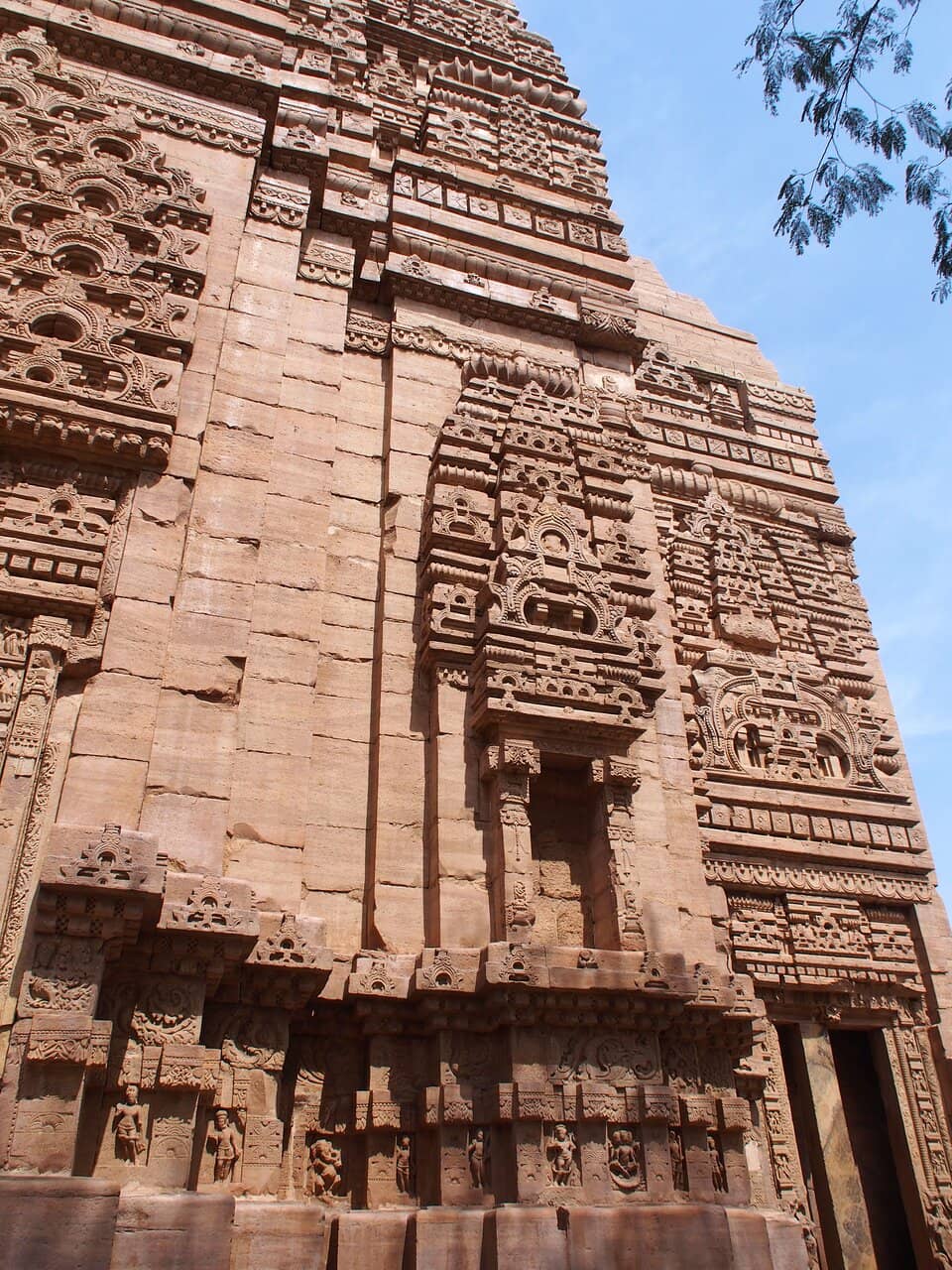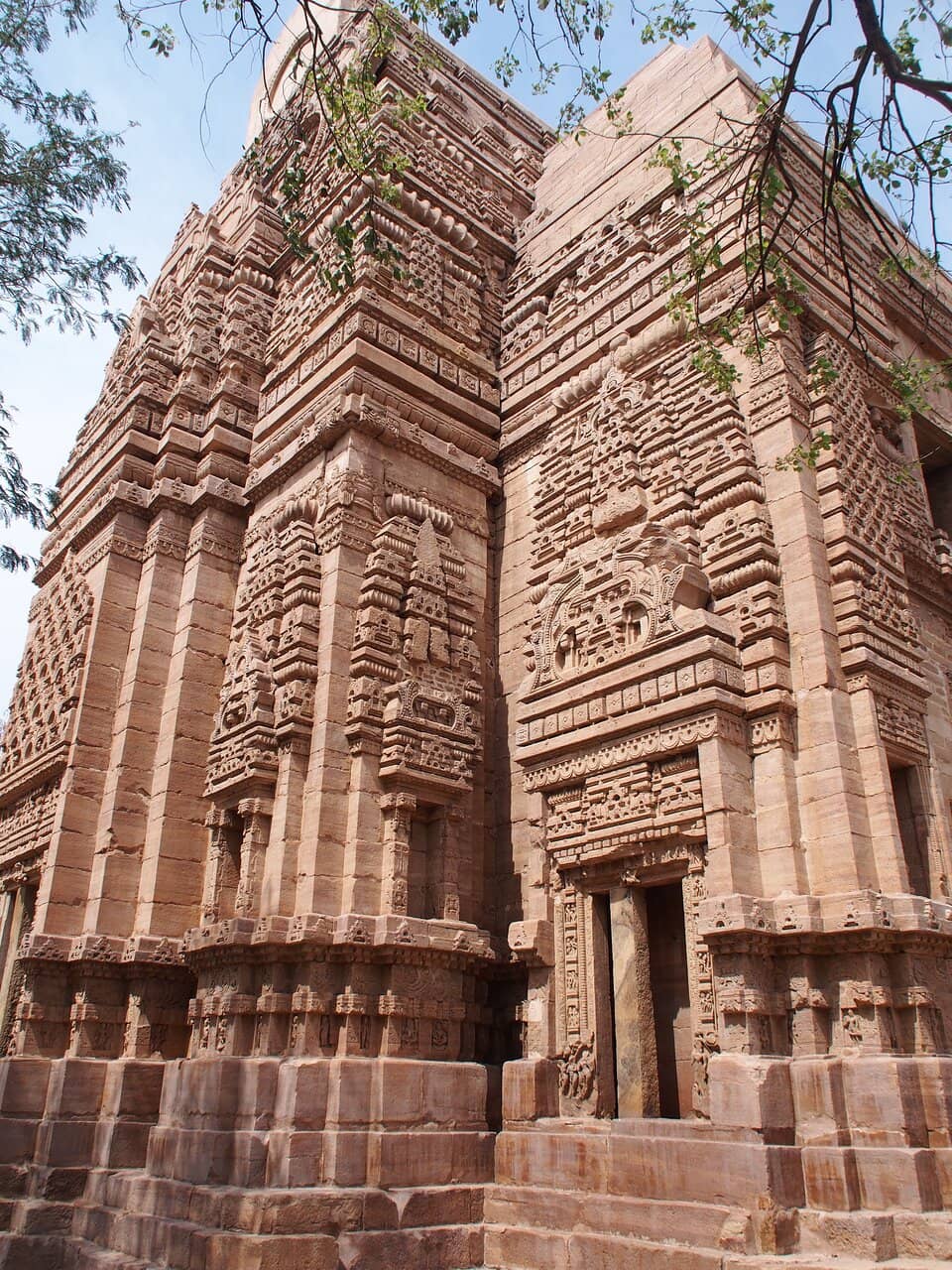
Teli Ka Mandir Gwalior
A towering 8th-9th century temple within Gwalior Fort, famed for its unique Dravidian-Nagara architectural fusion and intricate carvings.

Highlights
Must-see attractions

Social
From TikTok & Reddit
Best Time
Beat the heat and crowds

Teli Ka Mandir Gwalior
Best Time
Beat the heat and crowds

Highlights
Must-see attractions
A towering 8th-9th century temple within Gwalior Fort, famed for its unique Dravidian-Nagara architectural fusion and intricate carvings.
"A marvel of ancient Indian architecture, Teli Ka Mandir stands tall with its unique blend of styles."

Wear Comfortable Shoes
You'll be exploring Gwalior Fort, so sturdy footwear is a must! :athletic_shoe:
Combine with Fort Exploration
Teli Ka Mandir is inside Gwalior Fort. Plan to see other attractions like Saas-Bahu Temple. :world_map:

Highlights
Discover the most iconic attractions and experiences

Towering Shikara
Gwalior Fort
The tallest monument in Gwalior Fort, its soaring spire is a marvel of ancient Indian architecture.

Architectural Fusion
Gwalior Fort
A rare blend of Dravidian and Nagara styles, showcasing unique design principles.

Intricate Carvings
Gwalior Fort
Detailed sculptures of deities, mythical creatures, and floral motifs adorn its exterior walls.
Plans like a pro.
Thinks like you
Planning Your Visit
Timing Your Gwalior Fort Visit
Understanding the Name
Best Times
Insider Tips
from TikTok, Instagram & Reddit
Wear Comfortable Shoes
You'll be exploring Gwalior Fort, so sturdy footwear is a must! :athletic_shoe:
Combine with Fort Exploration
Teli Ka Mandir is inside Gwalior Fort. Plan to see other attractions like Saas-Bahu Temple. :world_map:
Appreciate the Details
Take time to admire the unique blend of North and South Indian architectural styles. :camerawithflash:
Visit During Golden Hour
The red sandstone glows beautifully in the late afternoon sun. :sunriseovermountains:
Tips
from all over the internet
Wear Comfortable Shoes
You'll be exploring Gwalior Fort, so sturdy footwear is a must! :athletic_shoe:
Combine with Fort Exploration
Teli Ka Mandir is inside Gwalior Fort. Plan to see other attractions like Saas-Bahu Temple. :world_map:
Appreciate the Details
Take time to admire the unique blend of North and South Indian architectural styles. :camerawithflash:
Visit During Golden Hour
The red sandstone glows beautifully in the late afternoon sun. :sunriseovermountains:
What Travellers Say
Reviews Summary
Visitors are consistently awestruck by Teli Ka Mandir's unique architectural fusion and its impressive height within Gwalior Fort. The intricate carvings and historical significance are frequently praised, making it a highlight for many exploring the fort. Some note the absence of idols, but the overall experience is overwhelmingly positive, highlighting its status as a must-see heritage site.
"During my exploration of Gwalior Fort on my visit to IIITM Gwalior, I stopped by the Teli Temple (तेली टेंपल) — one of the most striking and unique structures within the fort complex. The moment I saw it, I was amazed by its towering shikhara and distinctive blend of architectural styles — a fusion of North Indian Nagara and South Indian Dravidian influences that makes it stand out from anything else in Gwalior. Built around the 8th–9th century by the Pratihara rulers, the temple is dedicated to Lord Vishnu (though often associated with Shiva as well), and its name “Teli-ka-Mandir” is believed to come from the oil merchants (telis) who may have commissioned its restoration centuries later. The tall spire, intricate stone carvings, and grand entrance arch all speak of a time when craftsmanship was at its peak. Standing before it, surrounded by open courtyards and the quiet expanse of the fort, I felt both awe and peace — the temple exudes a sense of power and grace that transcends time. The sunlight falling on its red sandstone surface gave it a golden glow, and the silence around made the moment even more special. Visiting the Teli Temple was one of the highlights of my Gwalior Fort experience — a place where art, history, and spirituality meet in perfect harmony."
Ragini Bhattacharyya
"The Teli Ka Mandir, likely dating to the 8th-9th century under the Gurjara-Pratihara dynasty, stands prominently in Gwalior Fort. Its unusual name, perhaps linked to the oil-pressers' guild, hints at its patrons or historical function.
Architecturally, it presents a towering, rectilinear Dravidian style shikhara (pyramid-like roof) atop a typical Nagara base. This blend of North and South Indian fusion exemplifies a rare pan-Indian temple design.
The massive stone exterior is heavily tiered, featuring vertical rathas and ornate niches. Wall niches host Hindu deities, mithuna couples, and apsaras, characteristic of the Pratihara style.
The main doorway offers the finest ornamental display. Its elaborate doorjambs showcase delicate river goddesses, dwarpalas (gatekeepers), and finely detailed floral and geometric patterns, leading to the sanctuary.
The inner sanctum (garbhagriha) is characteristically simple. Despite being originally dedicated to Vishnu, the Teli Temple is primarily a monument to architectural ambition and the masterful skill of its ancient builders."
Rizwan Uddin
"Teli temple also known as Teli ka Temple located within the Gwalior Fort Dedicated to Shiva, Vishnu and Matrikas. it has a rectangular sanctum instead of the typical square. temple is a classic example of a design based on musical harmonics in architecture"
Preetham Kb
What People Like
What People Dislike
Frequently Asked Questions
🚇 🗺️ Getting There
Teli Ka Mandir is located within the historic Gwalior Fort. You can reach the fort by taxi or auto-rickshaw from Gwalior Railway Station (approx. 3 km). Once inside the fort complex, it's a prominent structure to find.
Yes, it's well-integrated within the Gwalior Fort complex. Many visitors combine a visit to Teli Ka Mandir with the nearby Saas-Bahu Temple.
The fort is quite extensive. Consider hiring a local guide or using a map of the fort complex to efficiently locate Teli Ka Mandir and other key sites.
🎫 🎫 Tickets & Entry
Teli Ka Mandir is part of the Gwalior Fort complex, so you will need an entry ticket for the fort itself. Check the latest ticket prices at the fort entrance.
Teli Ka Mandir follows the general opening hours of Gwalior Fort. Typically, the fort is open from sunrise to sunset. It's best to confirm current timings before your visit.
Yes, there is an entry fee for Gwalior Fort. The fee is nominal and covers access to all the monuments within the complex, including Teli Ka Mandir.
🎫 🏛️ Onsite Experience
Teli Ka Mandir is renowned for its unique blend of Dravidian and North Indian (Nagara) architectural styles, featuring a tall, rectilinear shikhara and intricate stone carvings.
Built around the 8th-9th century during the Pratihara dynasty, its name is thought to be derived from oil merchants. It was originally dedicated to Lord Vishnu.
Currently, there are no idols left inside the temple's sanctum. However, the exterior is adorned with sculptures of deities and mythical creatures.
The name is believed to be linked to the 'telis' or oil merchants, possibly indicating their patronage or a historical function related to oil.
Within Gwalior Fort, you can also visit the Saas-Bahu Temple, Man Mandir Palace, and the Suraj Kund.
📸 📸 Photography
Capture the towering shikhara from a distance, and get close-ups of the intricate carvings on the walls and the main doorway. The late afternoon light is ideal.
Photography is generally allowed within the Gwalior Fort complex, including at Teli Ka Mandir. However, always be respectful of the historical site.
A wide-angle lens is great for capturing the scale of the temple and its surroundings. A zoom lens can help with details of the carvings.
For Different Travelers
Tailored advice for your travel style
👨👩👧 Families with Kids
To make the visit more enjoyable for kids, pack plenty of water and snacks, and ensure they wear comfortable shoes for walking. Consider a shorter, focused visit to Teli Ka Mandir and a few other key attractions within the fort to avoid overtiring them. Storytelling about the ancient rulers and the temple's history can also make the visit more interactive and educational.
🏛️ History & Architecture Enthusiasts
Delve into the historical context of the Gurjara-Pratihara dynasty and the potential patronage of oil merchants. The absence of idols today adds a layer of mystery, inviting contemplation on the temple's long and varied history. Visiting Teli Ka Mandir is an opportunity to witness firsthand the grandeur and ingenuity of ancient Indian craftsmanship.
Deep Dives
In-depth insights and expert knowledge
Architectural Marvel: A Fusion of Styles
The exterior of Teli Ka Mandir is a canvas of detailed craftsmanship. Heavily tiered walls feature vertical rathas (ornamental projections) and numerous niches. These niches are adorned with sculptures depicting Hindu deities, mithuna couples (amorous pairs), and apsaras (celestial dancers), all executed in the distinctive Pratihara style. The main doorway is particularly ornate, with elaborate doorjambs showcasing delicate river goddesses, dwarpalas (gatekeepers), and intricate floral and geometric patterns, leading into the sanctuary.
While originally dedicated to Lord Vishnu, the temple later saw use for Shiva worship, and its name, 'Teli Ka Mandir,' is thought to originate from the oil-pressers' guild, suggesting potential patrons or a historical connection to oil merchants. Despite the absence of idols today, the temple remains a powerful testament to the architectural ambition and masterful skill of its ancient builders.
Exploring Gwalior Fort: Beyond Teli Ka Mandir
Navigating the fort can be an adventure in itself. Consider hiring a local guide to gain deeper insights into the history and legends associated with each structure. Wear comfortable walking shoes, as the fort grounds are extensive and involve inclines. Carry water, especially during warmer months, and plan your visit to avoid the peak midday sun. The fort offers panoramic views of the surrounding city, making it a fantastic spot for photography, particularly during sunrise or sunset.
When planning your visit, remember that Teli Ka Mandir is best experienced as part of a larger Gwalior Fort exploration. The fort's sheer scale and the historical significance of its various monuments, including Teli Ka Mandir, offer a rich and immersive experience for history buffs and architecture enthusiasts alike.

Social
from TikTok, Instagram & Reddit